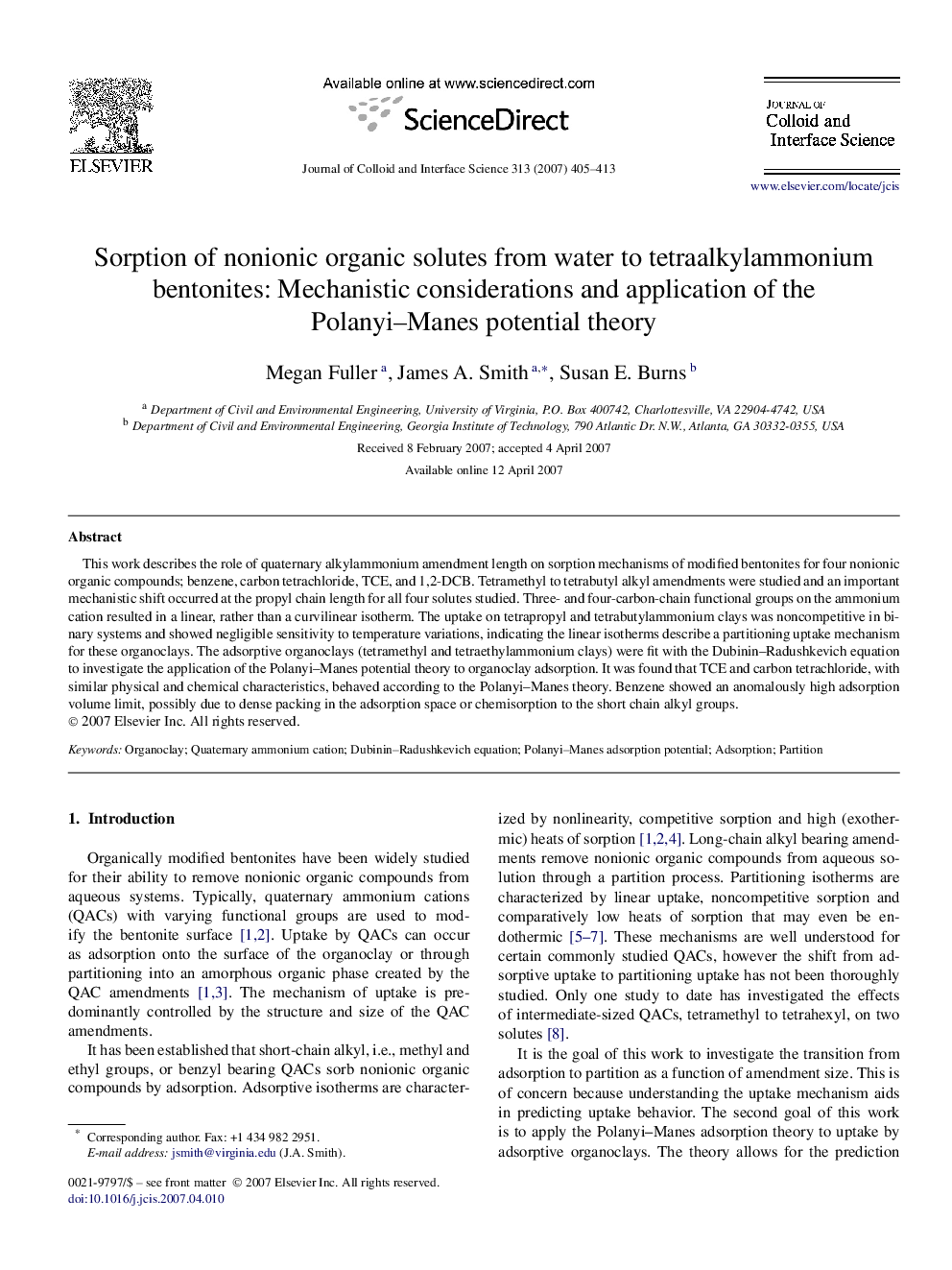| Article ID | Journal | Published Year | Pages | File Type |
|---|---|---|---|---|
| 611774 | Journal of Colloid and Interface Science | 2007 | 9 Pages |
This work describes the role of quaternary alkylammonium amendment length on sorption mechanisms of modified bentonites for four nonionic organic compounds; benzene, carbon tetrachloride, TCE, and 1,2-DCB. Tetramethyl to tetrabutyl alkyl amendments were studied and an important mechanistic shift occurred at the propyl chain length for all four solutes studied. Three- and four-carbon-chain functional groups on the ammonium cation resulted in a linear, rather than a curvilinear isotherm. The uptake on tetrapropyl and tetrabutylammonium clays was noncompetitive in binary systems and showed negligible sensitivity to temperature variations, indicating the linear isotherms describe a partitioning uptake mechanism for these organoclays. The adsorptive organoclays (tetramethyl and tetraethylammonium clays) were fit with the Dubinin–Radushkevich equation to investigate the application of the Polanyi–Manes potential theory to organoclay adsorption. It was found that TCE and carbon tetrachloride, with similar physical and chemical characteristics, behaved according to the Polanyi–Manes theory. Benzene showed an anomalously high adsorption volume limit, possibly due to dense packing in the adsorption space or chemisorption to the short chain alkyl groups.
Graphical abstractAn experimental study was performed to evaluate the adsorption/partition transition in nonionic solute uptake to tetraalkylammonium bentonites. The adsorptive equilibrium isotherms were fit with the Dubinin–Radushkevich model derived from the Polanyi–Manes potential theory.Figure optionsDownload full-size imageDownload as PowerPoint slide
